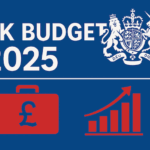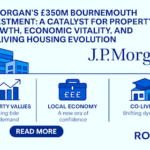The UK HMO (House in Multiple Occupation) market represents one of the most significant segments of the rental property sector. A recent analysis reveals a market that’s not only substantial in size but also generating impressive returns for professional operators.
Understanding the true scale and value of this market is crucial for anyone considering property investment or looking to understand the rental accommodation landscape.
Market Size and Value
New analysis from COHO, based on Office for National Statistics data, shows there are an estimated 182,554 HMO properties in England and Wales. This represents a significant portion of the UK’s rental housing stock.
The total market value is substantial. The average value of an HMO sits at £293,197, which means the entire HMO stock has an estimated market value of just over £78 billion.
To put this in perspective, £78 billion is roughly equivalent to the GDP of a small European country. This isn’t a niche market but a major economic sector providing essential accommodation across the country.
Property Types and Tenant Numbers
The market splits into two main categories: 74% of HMO properties are ‘small’ HMOs, shared by three or four tenants, while 26% are ‘large’ properties with five tenants or more.
This breakdown is important because it shows that most HMOs are actually modest-sized shared houses rather than large-scale developments. The majority provide affordable housing for small groups of friends, colleagues, or students who want to share accommodation costs while maintaining quality living standards.
Rental Income Generation
The financial performance of the HMO sector is impressive. The average annual rental income for an HMO in England & Wales sits at £29,715, and across all 182,554 properties, the entire HMO sector is generating an estimated total rental income of over £6.3 billion a year.
This £6.3 billion annual income demonstrates the sector’s economic importance. It’s not just providing accommodation – it’s generating substantial economic activity through rental payments, property maintenance, management services, and related spending.
For individual property owners, this means the average HMO generates nearly £30,000 per year in rental income. Compare this to a typical family home rental that might generate £12,000-18,000 annually, and you can see why professional investors find HMOs attractive.
Regional Breakdown
The distribution of HMOs across the country reflects local housing needs and economic conditions.
London Dominates
London is home to the largest proportion of HMOs, accounting for 33.9% of the national total. This concentration makes sense given the capital’s high property prices and large population of young professionals.
In London, where the average value of an HMO property sits at £660,227, the total stock has a combined value of almost £40.9 billion. That’s more than half the entire UK HMO market value concentrated in one city.
London HMOs also generate strong rental returns. HMOs in the capital generate an average annual rental income of £40,169, which means London’s entire stock creates an annual rental income of £2.5 billion.
Other Major Regions
The market extends well beyond London. The South East accounts for 13.6% of HMOs, South West 10.7%, North West 8.4%, and Yorkshire & Humber 7.4%.
What’s particularly interesting is that while London has the largest combined HMO rental income, individual properties actually generate the most rental income in the South East, where each HMO averages £46,042.
This suggests that South East HMOs, likely benefiting from proximity to London employment while having lower property costs, can achieve optimal rental returns. The region generates a combined rental income of more than £1.1 billion.
Regional Performance Variations
Different regions show interesting patterns:
- The South West HMO market generates rental income of £747.3 million, likely driven by university cities and coastal employment centres
- Yorkshire & Humber is home to the lowest average HMO value (£196,014) and second-lowest average rental income (£21,208), but its large market size means strong overall performance
- The East Midlands commands the lowest average annual rental income per property (£20,223), but due to a healthy average HMO value of £236,779, its total stock value of £2.9 billion outperforms several other regions
These variations reflect local economic conditions, employment opportunities, and housing costs. Areas with lower property values can still generate good rental yields, making them attractive for investors with smaller budgets.
Market Growth Potential
Industry experts see significant potential for market expansion and improved returns.
Current Underperformance
According to COHO’s analysis, HMO landlords are actually leaving a huge amount of money on the table. This suggests the £6.3 billion annual rental income could be substantially higher with better management practices.
The opportunity lies in improving standards and service quality. Many HMO operators still run basic shared houses rather than professional accommodation services that modern tenants expect and are willing to pay for.
Premium Pricing Opportunities
Research shows that tenants are willing to pay as much as 10% more in rent in exchange for a heightened HMO experience, including the opportunity to live with compatible housemates whose personalities and lifestyles match their own.
Additional premiums are available for properties with high-quality finishes, strong landlord communication, efficient financial processes, and speedy maintenance management.
This means the market has room to grow not just through more properties, but through higher-value services that justify premium rents.
What Drives Market Value
Several factors explain why the HMO market has reached £78 billion in value and continues growing.
Demographic Demand
Young professionals, students, and key workers increasingly need flexible, affordable accommodation. Traditional rental options often don’t meet their needs for community, affordability, or location.
HMOs fill this gap by providing quality accommodation in desirable locations at prices individual tenants can afford. A £2,000 monthly rental becomes £500 per person when shared between four people, making expensive areas accessible.
Economic Efficiency
HMOs make better use of the existing housing stock. A four-bedroom family home might house one family of four, but as an HMO, it can accommodate four working adults, each contributing to the local economy.
This efficiency helps explain why rental yields are typically higher for HMOs than single-family rentals in the same areas.
Housing Shortage Context
With the UK facing ongoing housing shortages and home ownership becoming increasingly difficult for young people, demand for quality rental accommodation continues growing. HMOs provide an important part of the solution.
Future Market Outlook
Industry analysis suggests strong continued growth prospects for the HMO sector.
Rising Standards Drive Value
The HMO market’s value is going to keep increasing not only because of the constant and growing demand from a variety of tenant demographics, but also because rising tenant expectations mean landlords are going to improve the standard of living and thus benefit from stronger rental income.
This creates a positive cycle where better properties command higher rents, encouraging further investment in quality improvements.
Professional Management Becomes Standard
The scale of the market – £78 billion in assets generating £6.3 billion annually – is attracting professional management companies and institutional investors who bring higher standards and better systems.
This professionalisation benefits everyone: tenants get better accommodation and service, while property owners achieve better returns through improved efficiency and higher rents.
Technology and Innovation
Modern HMO management increasingly uses technology for everything from tenant matching to maintenance scheduling. This improves both tenant satisfaction and operational efficiency, supporting higher rental values.
Investment Implications
The data reveals why professional investors are attracted to the HMO sector and what success requires.
Scale of Opportunity
With nearly 183,000 properties worth £78 billion, this isn’t a niche market. There’s room for many different types of operators, from individual landlords with one or two properties to large-scale portfolio managers.
Regional Opportunities
Different regions offer different advantages. London provides the highest absolute returns but requires substantial capital. Other regions offer lower entry costs with still-attractive yields, particularly for investors who understand local markets.
Quality Premium
The research clearly shows that tenants will pay more for better accommodation and service. Success increasingly depends on providing genuine value rather than just cheap accommodation.
Conclusion
The UK HMO market represents a substantial, growing sector worth £78 billion and generating over £6.3 billion in annual rental income. With strong demographic drivers, ongoing housing shortages, and opportunities for improved returns through better management, the sector offers significant opportunities for professional operators.
Success requires understanding that modern HMO management is about providing a service, not just renting rooms. Tenants expect quality accommodation, responsive management, and fair treatment. Operators who deliver these standards are rewarded with higher rents, longer tenancies, and better returns.
The market’s size and growth trajectory make it an important part of the UK’s housing solution, providing affordable, flexible accommodation while generating substantial returns for professional property managers.
Ready to enter the professional HMO market with expert support? ROOMS® offers a comprehensive franchise package that provides everything you need to succeed in this expanding £78 billion sector.
With deep expertise in HMO management, proven systems, and ongoing support, the ROOMS® franchise gives you a robust framework for building a profitable property business. Discover how ROOMS® can help you capitalise on the opportunities in today’s £6.3 billion annual rental income market – contact our team to learn more.




